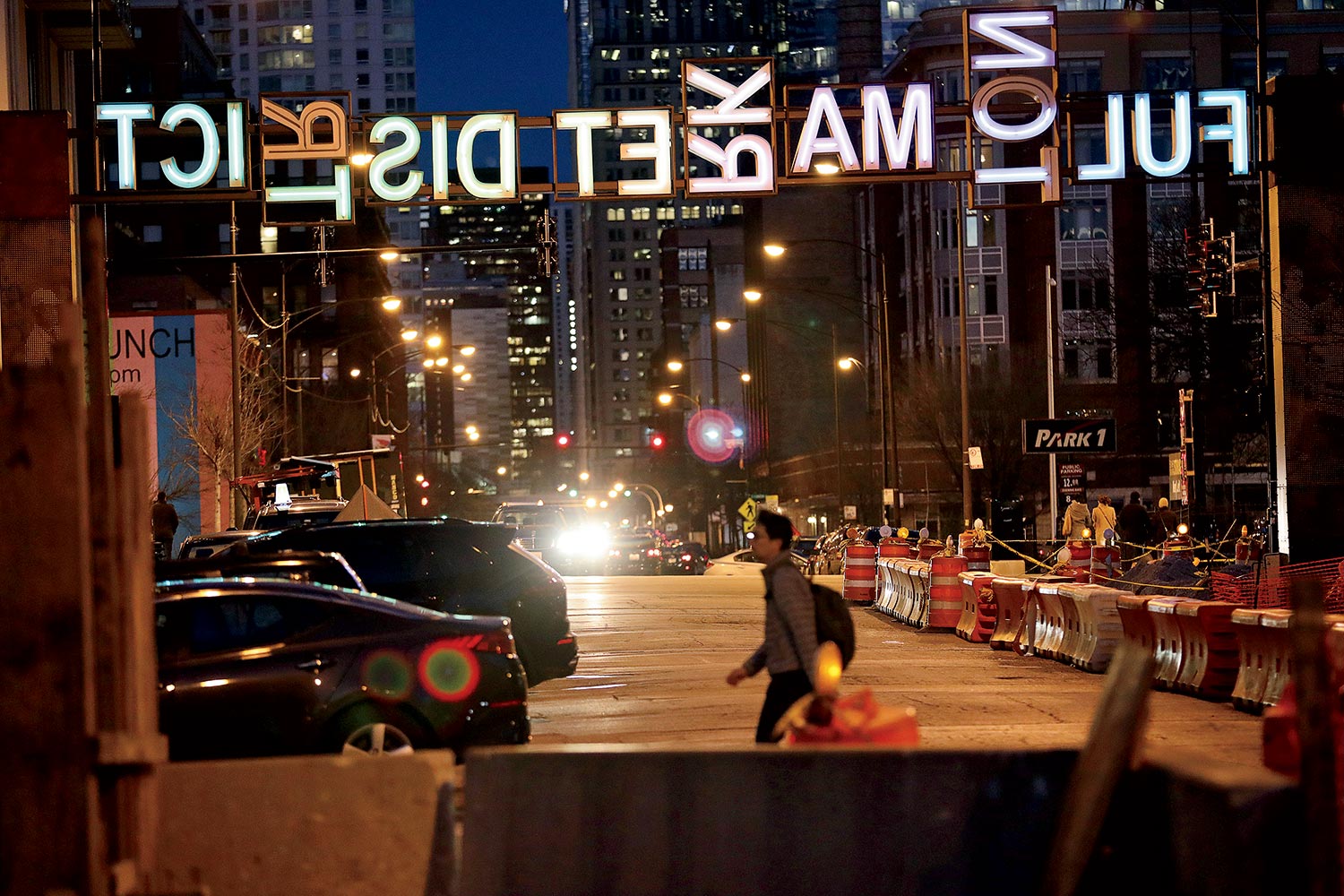During a recent walk in Fulton Market, I encountered the just-opened food hall Time Out Market. I passed Google’s second Chicago office, two minutes from its first. I also saw traffic cones, concrete barriers, and a boom lift.
The area’s transformation in the 2000s from meatpacking district to magnet for corporate offices and restaurants got the attention of Cushman & Wakefield last fall. The real estate services firm dubbed Fulton Market one of its “cool streets” — trendy, urban districts. Its experts ranked neighborhoods on a scale of “edgy/cool” to “gone mainstream,” and they placed Fulton Market smack in the middle at — wait for it — “prime hipness.” The area got the highest possible scores for food and nightlife. It also received top marks for walkability.
Tell that to the residents who navigate the stone-paved streets, blocked-off sidewalks, and construction trucks. “There have been many a time my windows have been open, and suddenly my whole home is full of diesel fumes,” says 12-year resident Levar Hoard, who is the managing director of the B-Line, an outdoor street art gallery on Hubbard Street. “I remember once literally being choked out of my home.” When it comes to construction, he says, the neighborhood is “the wild, wild West.”
The cranes aren’t going anywhere, says Rebecca Thomson, regional vice president of Coldwell Banker: “The trend to see headquarters move downtown for this live-work-play concept — no signs indicate that’s going to change.” If you’re considering moving to the area, you’d be smart to ask your real estate agent who owns the air rights across the street.
The diesel fumes also come with a side of rising prices. In 2011, the median price for a condo was $317,000. Today it’s $470,000, up 48 percent. The transformation is pushing out artists, galleries, “and all the others that made this place cool and attractive,” laments Moshe Tamssot, another West Loop resident.
For Tamssot, who moved there 17 years ago and runs the Facebook group True West Loop, it’s a missed opportunity: “We could have had what I call a market lifestyle neighborhood built around fresh produce, meats, dairy. We call it Fulton Market, but where’s the market?” He adds, half jokingly: “Everyone’s holding their breath for the Rainforest Cafe to appear.”



